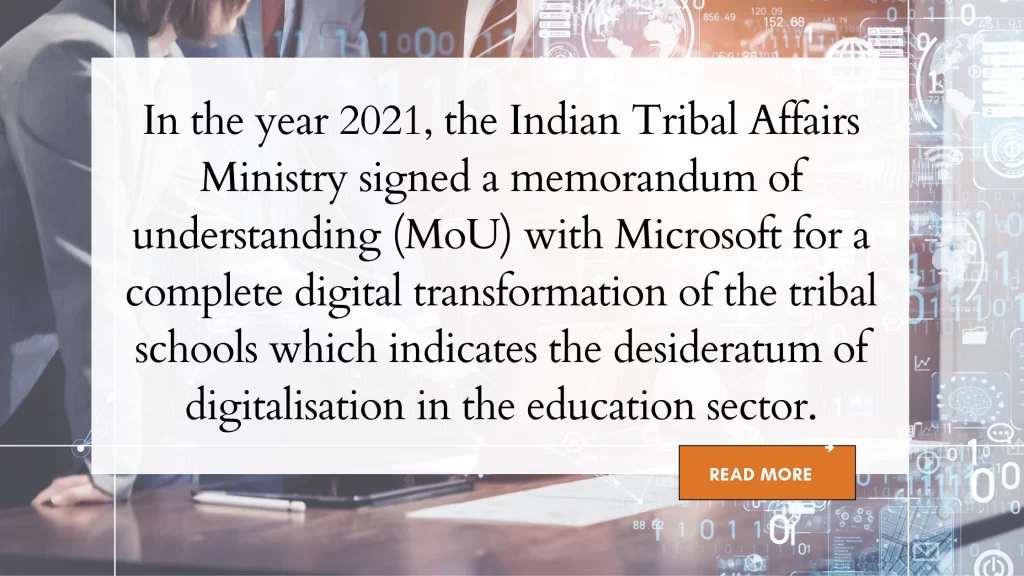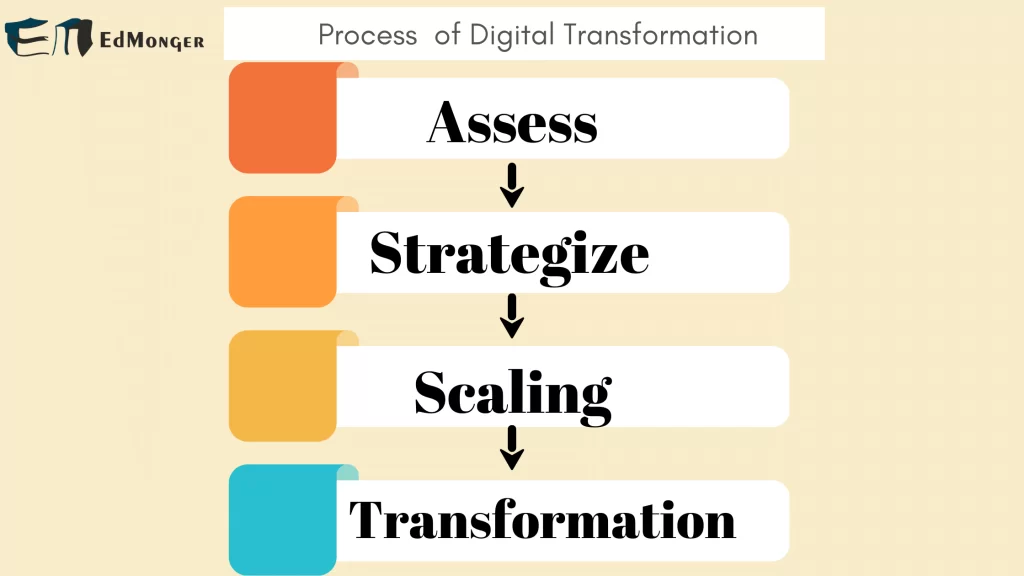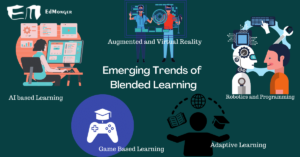From the last decade, we all have understood the importance of digital transformation in education hence, taking those tiny steps to achieve its potential. But today there are some very important thought-provoking questions come into the picture
-Is digitization the same as digital transformation?
-Does merely setting up an online learning platform for students mean the school/college‘s complete digital transformation?
-Is it not the time for a concrete digital transformation than just an inchmeal?
-The ones who are digitally transformed, are they sustainable or functioning 100% to their capacity?
If you resonate with these questions and thoughts, you must read this article to find out how digital transformation in education can be done to find more sustainable and predictable outcomes.
Also Read: EducationalTechnology Required in Schools for Better Management
Why should schools/colleges incline to complete digital Transformation?

Many schools/colleges took a leap in the digitization process thus providing e-textbooks, using LMS or ERP tools, video-assisted learning, smart boards and etc. But digitization is different from digital transformation in education.
Digital transformation requires an approach which will empower the organization towards its goals.
A complete digital transformation will cater for the needs of technology to improve operations, manage the data of students, strategize teaching-learning, and ensure employee performance.
Digital transformation is considered powerful if it provides sustainability, cost-effectiveness, and scope of change and the outcomes are predictable.
“A study by Mckinsey in 2022 shows that 70% of the digital transformation ends in Failures “
The complete process involved in Digital Transformation in education
Once the other factors are considered and are well in line with the outcomes it’s time to take over the process. The simplest thing people do is apply it and then use the theory of ‘fail fast to improve but for a small business, it is not affordable.
The time involved in digital transformation may be around 2-6 months only if everything is well executed, therefore it becomes crucial to be precise and smart while bringing it into action.
The process of digital transformation takes place in four major steps
- Assess:
In the first stage entire IT, core computing system, network, and bandwidth is assessed and the design is deeply studied to bring it to the standardised level. The designs are deeply read and scopes are decided in line with the outcomes.
Here, simple changes are most welcome, if the school/college is using some tools for e-learning must be checked for any flaws and can be redesigned for better results.
- Strategize:
The deep assessment will give a clear picture of redundancy, scopes where a new system needs to be filed and how the whole digital transformation can be marginalised with cost-effectiveness. Also, what digital resources are used and what can be refurbished?
For example, if the school is already using a website and has created parent/student accounts all services are delivered with ease and where there is a gap needs to be redone.
At this point, there’s no digital transformation to a new cutting-edge technology rather than the old ones are made more user-friendly to sail through easily.

- Scaling:
Remember till now no digital transformation is done only restructuring and root building are done. You must not undervalue these steps as these will give ease to the employees and they always find things relatable. Scaling is a little complex process though, here the structuring will include the use of new technology and the leadership practices of the organisation will play a vital role.
Some interviews with the users and employees can be done to check how the existing technology is serving and how effective the tiny changes are.
- Transformation
This is the step where new technologies like the internet of things, artificial intelligence, machine learning, augmented reality, virtual reality, cloud computing and big data come into the picture to automate everything.
The data is recorded to give better teaching-learning feedback and predict future-oriented skills wherein the use of artificial intelligence will not only enhance the user experience but also help in personalised learning.
The ground reality is this the organisation must not expect technology to help them reach the goal at once but the shift has to be gradual as the users are humans who will take a subsequent amount of time to understand and exploit these technologies.
Related: Different Types of Educational Technology
Suggestions on tools/technologies that can help in smooth digital transformation in education
Virtual Learning Environment
Though Virtual learning was not a new concept for education it got a real swing during the time of COVID-19. Every educational institute was taken over by virtual learning, whether they were well equipped or not. The government took a lot of initiative to support the virtual learning environment while the private players also played their roles.
The most convenient way online learning was delivered through Zoom, Microsoft teams, google meet and more.
Wherein the Government supported this cause by launching apps like PM E-Vidya, Swamprabha TV, Diksha and more.
School/College Operations
For managing school/college operations there is a wide variety of software and technologies developed to support and record student data, data to enhance learning, improve teaching-learning, and many more.
Some of the most used technologies are
- Learning Management System
- Student Integrated System
- Calendars
- Online Assessment
- Cloud storage and management
Digital payment gateways
There are many payment gateways which can be used by schools/colleges for the collection of fees, managing funds, and easy pay-outs for each and everything school/college. Either they can use technology like IoT or can outsource a company like Financepeer for this.
Digital Procurements
In educational institutions, a lot of time is wasted on procurement and it requires manpower which doesn’t even ensure error-free transactions and operations. E-procurement is something which can come as a rescue without needing to invest a lot of time in management. ‘The digital procurement will include everything from tendering and auctioning to invoicing.
Artificial Intelligence and Chatbots for assistance
A chatbot can be a great tool for personalised learning especially when the student-centric approach is kept as a goal. For example, tutorme.com is a learning app which is designed in a way where students are tutored by artificial intelligence tools and student can learn at their own pace without feeling any lag.
In many places, chatbots are installed in libraries which can assist to locate the book and further actions.
Duolingo is an app to learn a language in a way that understands a student’s pace and offers difficulty level according to that.
Might help: Digital technology practices facilitate school improvement.
AR/VR
A lot of apps and features provided by Google and many private companies to help students use AR/VR are introduced.
For example
Google Earth VR – Explore the entire earth with a life-like experience.
Round me – It’s a virtual tour library which can be used in the classroom.
Near Pod It engages students with its content library, 1-to-1 learning with personalised and self-paced learning as an option.
Lifelique VR Museum amazing model for schools with VR.
Point of View You Must Take
The most common reason why any digital transformation in education fail is that we are over-optimistic and start expecting immediate results from the technology but forget the human factor involved. A Digital Transformation strategy will only work if the people and leadership involved take it through the right way. The governance must prioritise adoption before a high-end technology. It’s the people who will be helped so it must come to them easily. We would love to know how your organisation has made it easy to adopt the transformation.




